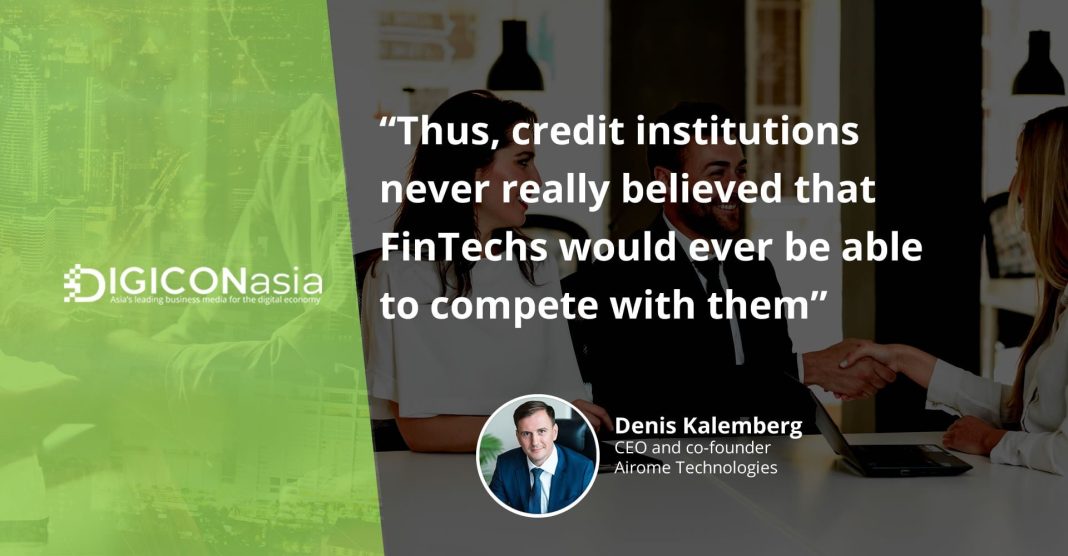Despite earlier hostilities, the Fintech and Banking sectors are already starting to embrace co-opetition: cooperating competitively for mutual gains.
With more than a decade of experience working between the exciting intersection of cybersecurity and FinTech in Russia, it is interesting to observe and compare key development trends of digital payment channels between Eastern Europe and Southeast Asia.
Banking collaborations with FinTechs
The main topic of discussion surrounding key FinTech and Banking conferences in Russia five years ago was, “Will banks survive in competition with FinTech?”. In my opinion, at that time, nobody believed that well-entrenched credit institutions would lose to a younger FinTech companies. This stemmed from the deep-rooted positioning of credit institutions in the financial sector where they had a significant share of the market. Thus, credit institutions never really believed that FinTechs would ever be able to compete with them.
However, as the digital wave slowly ebbed its way into the market, banks started to invest their efforts and money in building an ecosystem across their digital channels. This includes rebuilding their entire digital infrastructure to include websites, non-financial services, internet and mobile banking.
Banks similarly formed partnerships with FinTech companies to offer other services that were retrofitted into their digital ecosystem. This resulted in the creation of a simple, secure, and seamless digital transaction service tailored for their clients.
The implementation of such a collaborative approach provides the following advantages:
- Customers can gain a perfect shopping experience using existing features that have been implemented in the digital ecosystem.
- The bank’s platform is able to establish structural solutions for a marketplace that caters to both financial and non-financial services. This allows for services such as banking websites and internet banking to become a united ecosystem that accompanies the lifecycle of both business leaders and users— starting from business registration to closing a business.
In my opinion, such collaborations benefit both parties and have helped Russia to navigate the digital transformation of banking services.
ASEAN banking is ripe for Fintech as a service
Compared to what we see in ASEAN countries, the situation has evolved in a somewhat wholly different way. At some point, banks missed the opportunity of becoming the industry leaders in creating digital services. As such, FinTech companies took advantage of the opportunities and created their own financial ecosystems outside of banking. An example in this case, is the development of Grab services. Starting out as a technology platform that provided ride hailing services, the company then started including more services such as food delivery and finally their own payment system that is widely accepted in much of Asia.
In the past, customers were satisfied with simply finding and buying goods and services. However, as we rapidly transited towards a digital economy, clients started to demand more from these digital services. As such, clients want to receive a solution to a problem before its occurrence or even before the problem arises. A prime example would be to offer travel insurance while making payment at the time of flight booking or offering payroll services while opening a new business.
The best value proposition to a client is the reduction in decision-making time, the quality of a solution, receiving a service, and the ability of managing all of it in one place. Why should any client seek a solution in a search engine, wait for an invoice, and enter their payment details in a payroll, when they can do it with a few clicks through the integration of non-financial services with Internet banking.
With the integration of these services, clients can do a lot more. Otherwise, they would need to use additional applications or services.
An integrated approach to digital banking
The integrated approach to digital services means that users can now access analytic reports, get legal and bookkeeping services via the same interface. Once a user gets used to a user interface’s logic, it will form a habit that promotes using the same interface for everyday digital banking tasks.
Meanwhile, as banks in the ASEAN region look towards working proactively to close the gap with FinTech companies, they need to expand the functionality of both the Internet and Mobile banking – making them both secure and straightforward to use.
Most importantly, banks continuously develop their digital channels by tracking and implementing the latest trends and innovations. All these with a high level of trust and a vast amount of information about their clients can have a significant impact.
I believe that banks in the ASEAN region will benefit significantly through integration with non-financial services. Here are the reasons why.
- It is a brilliant strategy in attaining a segment market and retaining customers. For example, if a client has a bank account, online bookkeeping, and legal assistance options, the likelihood of a client leaving the bank will be reduced significantly.
- This approach creates access to product usability via an interface where the user tends to spend much time with. The majority of the population wants to minimize the time that they spend on their work process in their everyday life. Thus, it makes sense that they prefer to be on the platform that they already using for in performing financial operations (payments, statements, counterpart’s verification).
Finally, banks can receive additional income through commission by selling partners’ products, which can be a critical part of the banking business. If you have an ongoing channel of communication with your client and all of their information such as their location and buying habits, financial institutions can offer services as and when their clients need it. This sense of convenience can then be comparable to searching for information on Google.



